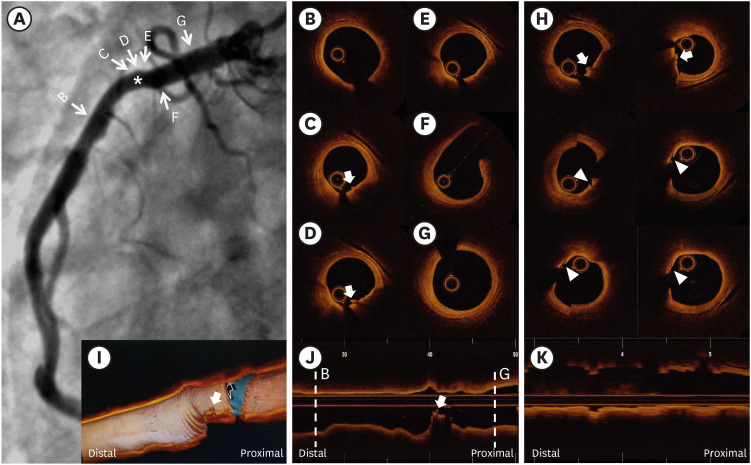Korean Circ J.
2020 Nov;50(11):1043-1044. 10.4070/kcj.2020.0081.
Rediscover a Missed Culprit Lesion with Optical Coherence Tomography in Acute Coronary Syndrome: a Simple Stationary Pullback Method
- Affiliations
-
- 1Heart Research Institute, College of Medicine, Chung-Ang University Hospital, Seoul, Korea
- 2Department of Cardiology, All India Institute of Medical Science, New Delhi, India
- 3Intervention Center, Quang Nam Central General Hospital, Quang Nam, Vietnam
- KMID: 2508284
- DOI: http://doi.org/10.4070/kcj.2020.0081
Figure
Reference
-
1. Jang IK, Tearney GJ, MacNeill B, et al. In vivo characterization of coronary atherosclerotic plaque by use of optical coherence tomography. Circulation. 2005; 111:1551–1555. PMID: 15781733.
Article2. Kubo T, Imanishi T, Takarada S, et al. Assessment of culprit lesion morphology in acute myocardial infarction: ability of optical coherence tomography compared with intravascular ultrasound and coronary angioscopy. J Am Coll Cardiol. 2007; 50:933–939. PMID: 17765119.
- Full Text Links
- Actions
-
Cited
- CITED
-
- Close
- Share
- Similar articles
-
- Acute coronary syndrome and vulnerable plaque
- Availability of Optical Coherence Tomography in Diagnosis and Classification of Choroidal Neovascularization
- Optimization of Percutaneous Coronary Intervention Using Optical Coherence Tomography
- Angiographically minimal but functionally significant coronary lesion confirmed by optical coherence tomography
- Utility of Optical Coherence Tomography to Assess a Hazy Intracoronary Image after Percutaneous Coronary Intervention


